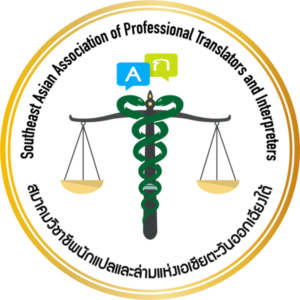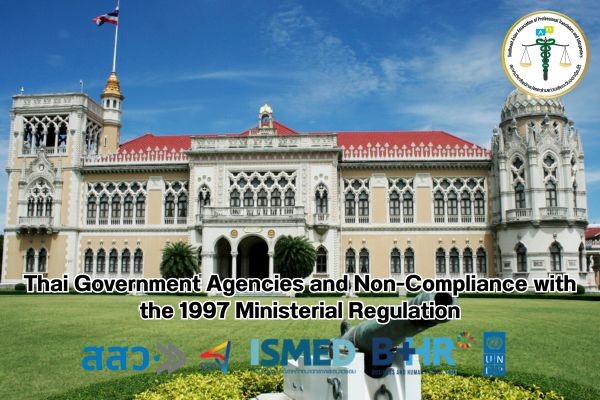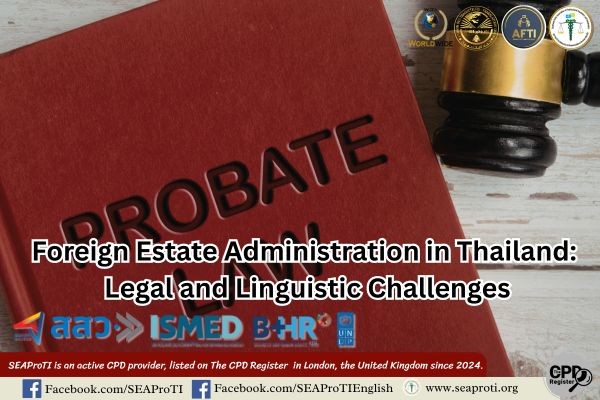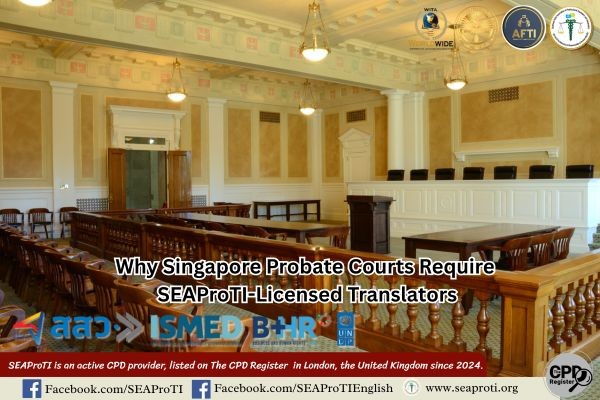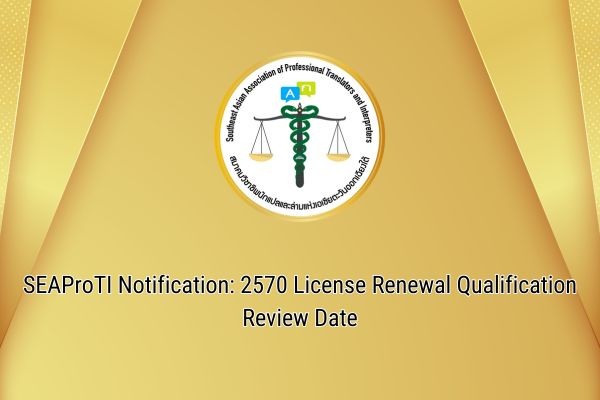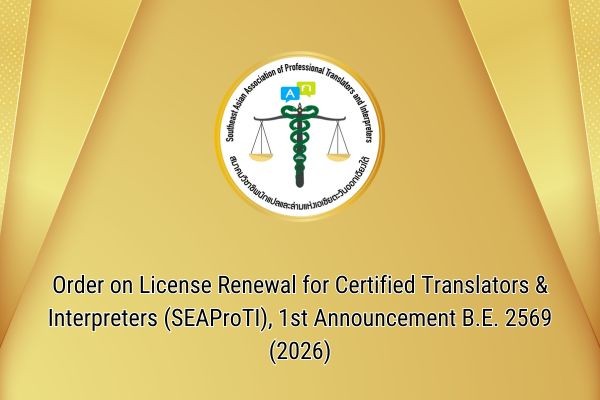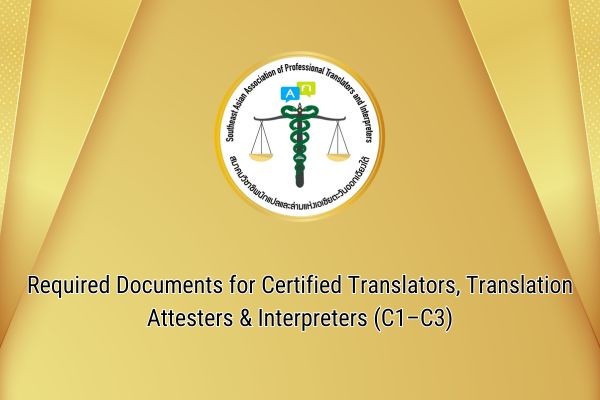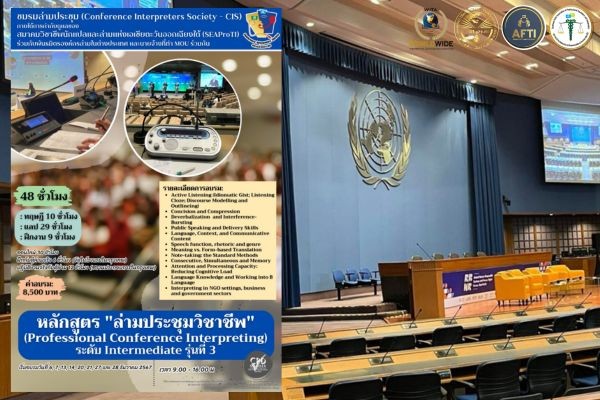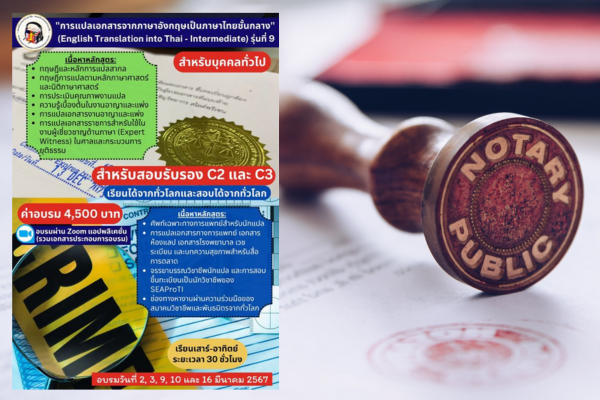The Difference Between Must and Shall in Legal Documents: Interpretation, Obligation, and Modern Trends in Legal Language
14 October 2025, Bangkok – This article analyzes the distinction between must and shall, two essential terms frequently found in legal documents and contracts. Both words serve to express obligation and requirement, yet they differ in legal force and interpretative implications. The paper examines their historical development in English and American law, discusses interpretative ambiguities, and explores the modern plain language drafting movement, which increasingly favors must over shall to promote clarity and prevent misinterpretation.
Legal language is a specialized linguistic register characterized by precision, stability, and the avoidance of ambiguity. Among the many words that have generated debate in legislative and contractual drafting, shall and must stand out for their significance and frequent misuse. Although both appear to impose duties, their legal meanings and pragmatic applications differ considerably (Mellinkoff, 1963; Bhatia, 1993).
The Meaning and Role of Shall
In legal drafting, shall is traditionally used to express a legal duty or obligation that leaves no room for discretion (Garner, 2019).
Example: The Lessee shall pay the rent on the first day of each month.
Here, shall imposes a binding obligation, and failure to comply constitutes a legal breach, such as non-performance of a contract or violation of a statutory duty. However, ambiguity arises because shall can also indicate a future tense, prediction, or command, which often leads to disputes in judicial interpretation (Adams, 2013).
The Meaning and Role of Must
The word must denotes necessity or mandatory action. In modern legislative drafting, must increasingly replaces shall because of its clarity and precision (Office of Parliamentary Counsel [UK], 2020).
Example: Applicants must submit the application within 30 days.
Under the plain language movement, must represents a shift toward accessibility and transparency in legal communication (Cutts, 2013). It signals a non-negotiable requirement while avoiding the grammatical confusion inherent in shall.
Legal Comparison Between Shall and Must
| Aspect | Shall | Must |
|---|---|---|
| Function | Legal obligation | Requirement or necessity |
| Enforcement | Legally binding | Procedural or operational requirement |
| Usage | Traditional statutes, contracts, formal laws | Modern legislation, regulations, manuals |
| Problem | Ambiguity between “duty” and “future tense” | Clear, direct, unambiguous |
| Modern trend | Declining in legal drafting | Increasing adoption |
In both the United States and the United Kingdom, legislative drafting authorities have officially recommended replacing shall with must to minimize interpretive uncertainty. For instance, the Texas Legislative Council issued drafting guidelines in 2019 advising against shall because of its ambiguous nature (Texas Legislative Council, 2019).
Modern Trends in Legal Drafting
Modern legal drafting emphasizes plain language, aiming to make legal texts comprehensible to non-lawyers and the general public (Kimble, 2012). Replacing shall with must is a key part of this linguistic reform. Institutions such as the European Union, U.S. Office of Legislative Counsel, and Australian Parliamentary Counsel endorse must as the preferred term to denote mandatory duties (Garner, 2019).
Conclusion
While shall has a long-standing tradition in Anglo-American legal drafting, contemporary drafting practices increasingly favor must for clarity and precision. The shift reflects a broader movement toward accessible and citizen-centered legal communication. Legal language today must not only be accurate but also understandable. The choice of a single word can significantly influence both the effectiveness of law and the fairness of its interpretation.
References
- Adams, K. A. (2013). A manual of style for contract drafting (3rd ed.). American Bar Association.
- Bhatia, V. K. (1993). Analyzing genre: Language use in professional settings. Longman.
- Cutts, M. (2013). Oxford guide to plain English (4th ed.). Oxford University Press.
- Garner, B. A. (2019). Garner’s modern English usage (4th ed.). Oxford University Press.
- Kimble, J. (2012). Writing for dollars, writing to please: The case for plain language in business, government, and law. Carolina Academic Press.
- Mellinkoff, D. (1963). The language of the law. Little, Brown & Company.
- Office of Parliamentary Counsel (UK). (2020). Drafting guidance: The use of plain English in legislation. Government of the United Kingdom.
- Texas Legislative Council. (2019). Bill drafting manual: Avoiding ambiguity in legislative texts. State of Texas.
About Certified Translators, Translation Certifiers, and Certified Interpreters of SEAProTI
The Southeast Asian Association of Professional Translators and Interpreters (SEAProTI) has formally announced the qualifications and requirements for registration of Certified Translators, Translation Certification Providers, and Certified Interpreters in Sections 9 and 10 of the Royal Gazette, published by the Secretariat of the Cabinet, Office of the Prime Minister of Thailand, on 25 July 2024 (Vol. 141, Part 66 Ng, p. 100). Certified Translators, Translation Certification Providers, and Certified Interpreters
The Council of State has proposed the enactment of a Royal Decree, granting registered translators and recognized translation certifiers from professional associations or accredited language institutions the authority to provide legally valid translation certification (Letter to SEAProTI dated April 28, 2025)
SEAProTI is the first professional association in Thailand and Southeast Asia to implement a comprehensive certification system for translators, certifiers, and interpreters.
Head Office: Baan Ratchakru Building, No. 33, Room 402, Soi Phahonyothin 5, Phahonyothin Road, Phaya Thai District, Bangkok 10400, Thailand
Email: hello@seaproti.com | Tel.: (+66) 2-114-3128 (Office hours: Mon–Fri, 09:00–17:00)
ความแตกต่างระหว่างคำว่า Must และ Shall ในเอกสารกฎหมาย: การตีความ หน้าที่ และแนวโน้มการใช้ภาษากฎหมายร่วมสมัย
14 ตุลาคม 2568, กรุงเทพมหานคร – บทความนี้วิเคราะห์ความแตกต่างระหว่างคำว่า must และ shall ซึ่งเป็นถ้อยคำสำคัญในเอกสารทางกฎหมายและสัญญา ทั้งสองคำมีบทบาทในการกำหนด “หน้าที่” (obligation) และ “ข้อบังคับ” (requirement) ที่มีผลต่อการตีความทางกฎหมาย บทความอธิบายพัฒนาการของการใช้ทั้งสองคำในกฎหมายอังกฤษและอเมริกัน รวมถึงแนวทางร่างกฎหมายแบบภาษาธรรมดา (Plain Language Drafting) ซึ่งมีแนวโน้มแทนที่คำว่า shall ด้วย must เพื่อหลีกเลี่ยงความกำกวมในการตีความ
ภาษากฎหมาย (legal language) เป็นภาษาที่มีลักษณะเฉพาะตัว ทั้งด้านไวยากรณ์ คำศัพท์ และโครงสร้างที่มุ่งหมายให้เกิดความแน่นอน (certainty) และหลีกเลี่ยงความคลุมเครือ (ambiguity) คำสองคำที่มักสร้างข้อถกเถียงในวงการร่างกฎหมายคือ shall และ must ซึ่งปรากฏอย่างแพร่หลายในกฎหมาย สัญญา และระเบียบปฏิบัติ ทั้งสองคำต่างสื่อถึง “หน้าที่ต้องปฏิบัติ” แต่มีนัยทางกฎหมายที่ต่างกันอย่างมีนัยสำคัญ (Mellinkoff, 1963; Bhatia, 1993)
ความหมายและบทบาทของ Shall
คำว่า shall ในบริบทกฎหมายใช้เพื่อแสดง “หน้าที่ทางกฎหมาย” (legal duty) หรือ “พันธกรณี” (obligation) ที่บุคคลต้องกระทำโดยไม่สามารถหลีกเลี่ยงได้ (Garner, 2019)
เช่น ตัวอย่างจากสัญญาเช่า:
The Lessee shall pay the rent on the first day of each month.
(ผู้เช่าต้องชำระค่าเช่าในวันแรกของทุกเดือน)
การใช้ shall จึงเป็นถ้อยคำบ่งชี้ภาระผูกพันทางกฎหมาย หากไม่ปฏิบัติตาม ย่อมเกิดผลทางกฎหมาย เช่น การผิดสัญญา หรือการละเมิดบทบัญญัติแห่งกฎหมาย อย่างไรก็ตาม ปัญหาที่เกิดขึ้นคือ shall อาจถูกตีความได้หลายแบบ เช่น ใช้แสดง “คำสั่ง” (command), “คำพยากรณ์” (prediction) หรือ “อนาคตกาล” (future tense) ซึ่งอาจทำให้เกิดข้อโต้แย้งในชั้นศาล (Adams, 2013)
ความหมายและบทบาทของ Must
คำว่า must หมายถึง “สิ่งที่จำเป็นต้องทำ” หรือ “ข้อบังคับที่ไม่มีทางเลือก” (necessity/requirement) และในเชิงร่างกฎหมายสมัยใหม่ คำนี้ถูกนำมาใช้แทน shall อย่างกว้างขวาง เนื่องจากมีความชัดเจนกว่า (Office of Parliamentary Counsel [UK], 2020)
ตัวอย่าง: Applicants must submit the application within 30 days.
(ผู้สมัครต้องยื่นคำขอภายใน 30 วัน)
ในบริบทของการร่างกฎหมายแบบภาษาธรรมดา (plain language), must ถูกมองว่าเป็นคำที่ลดความกำกวม และสะท้อนแนวคิด “กฎหมายเพื่อประชาชนเข้าใจได้” (law for all) (Cutts, 2013)
การเปรียบเทียบทางกฎหมายระหว่าง Shall และ Must
| ประเด็น | Shall | Must |
|---|---|---|
| ลักษณะ | หน้าที่ทางกฎหมาย (Legal obligation) | ข้อบังคับหรือเงื่อนไข (Requirement) |
| การบังคับใช้ | มีผลผูกพันโดยตรง | เน้นความจำเป็นเชิงปฏิบัติ |
| การใช้ในเอกสาร | กฎหมายดั้งเดิม, สัญญา, พระราชบัญญัติ | กฎหมายร่วมสมัย, ระเบียบ, คู่มือ |
| ปัญหา | ความกำกวมระหว่าง “หน้าที่” กับ “อนาคตกาล” | ชัดเจน เข้าใจง่าย ไม่มีนัยสองแง่ |
| แนวโน้ม | ลดลงในเอกสารร่างกฎหมาย | เพิ่มขึ้นในร่างกฎหมายใหม่ |
การร่างกฎหมายในสหรัฐอเมริกาและสหราชอาณาจักรในช่วงหลังได้แนะนำให้ใช้ must แทน shall ตัวอย่างเช่น รัฐเท็กซัสได้ออกแนวทางให้เลิกใช้ shall ในร่างกฎหมายตั้งแต่ปี 2019 เนื่องจากพบว่าคำนี้สร้างข้อถกเถียงทางการตีความบ่อยครั้ง (Texas Legislative Council, 2019)
แนวโน้มการใช้ภาษากฎหมายร่วมสมัย
แนวโน้มการใช้ภาษากฎหมายในยุคปัจจุบันมุ่งไปสู่การใช้ “ภาษาธรรมดา” (plain language movement) เพื่อให้เอกสารทางกฎหมายเข้าใจง่ายและเข้าถึงได้สำหรับประชาชนทั่วไป (Kimble, 2012) การแทนที่ shall ด้วย must เป็นหนึ่งในมาตรการสำคัญของขบวนการนี้ โดยองค์กรต่าง ๆ เช่น European Union, Office of the Legislative Counsel (US) และ Australian Parliamentary Counsel ได้รับรองให้ใช้ must ในบทบัญญัติที่ต้องการแสดงภาระผูกพัน (Garner, 2019)
บทสรุป
แม้คำว่า shall จะมีรากเหง้าทางประวัติศาสตร์ยาวนานในภาษากฎหมายอังกฤษ แต่ในปัจจุบันแนวทางร่างกฎหมายสมัยใหม่ได้เปลี่ยนไปสู่การใช้ must เพื่อความชัดเจนและลดความคลุมเครือในการตีความ ภาษากฎหมายจึงไม่เพียงแต่ต้อง “ถูกต้อง” แต่ยังต้อง “เข้าใจได้” การเลือกใช้คำจึงมีผลต่อทั้งประสิทธิภาพของกฎหมายและความยุติธรรมในการตีความ
เอกสารอ้างอิง (References)
- Adams, K. A. (2013). A manual of style for contract drafting (3rd ed.). American Bar Association.
- Bhatia, V. K. (1993). Analyzing genre: Language use in professional settings. Longman.
- Cutts, M. (2013). Oxford guide to plain English (4th ed.). Oxford University Press.
- Garner, B. A. (2019). Garner’s modern English usage (4th ed.). Oxford University Press.
- Kimble, J. (2012). Writing for dollars, writing to please: The case for plain language in business, government, and law. Carolina Academic Press.
- Mellinkoff, D. (1963). The language of the law. Little, Brown & Company.
- Office of Parliamentary Counsel (UK). (2020). Drafting guidance: The use of plain English in legislation. Government of the United Kingdom.
- Texas Legislative Council. (2019). Bill drafting manual: Avoiding ambiguity in legislative texts. State of Texas.
เกี่ยวกับนักแปลรับรอง ผู้รับรองการแปล และล่ามรับรองของสมาคมวิชาชีพนักแปลและล่ามแห่งเอเชียตะวันออกเฉียงใต้
สมาคมวิชาชีพนักแปลและล่ามแห่งเอเชียตะวันออกเฉียงใต้ (SEAProTI) ได้ประกาศหลักเกณฑ์และคุณสมบัติผู้ที่ขึ้นทะเบียนเป็น “นักแปลรับรอง (Certified Translators) และผู้รับรองการแปล (Translation Certification Providers) และล่ามรับรอง (Certified Interpreters)” ของสมาคม หมวดที่ 9 และหมวดที่ 10 ในราชกิจจานุเบกษา ของสำนักเลขาธิการคณะรัฐมนตรี ในสำนักนายกรัฐมนตรี แห่งราชอาณาจักรไทย ลงวันที่ 25 ก.ค. 2567 เล่มที่ 141 ตอนที่ 66 ง หน้า 100 อ่านฉบับเต็มได้ที่: นักแปลรับรอง ผู้รับรองการแปล และล่ามรับรอง
สำนักคณะกรรมการกฤษฎีกาเสนอให้ตราเป็นพระราชกฤษฎีกา โดยกำหนดให้นักแปลที่ขึ้นทะเบียน รวมถึงผู้รับรองการแปลจากสมาคมวิชาชีพหรือสถาบันสอนภาษาที่มีการอบรมและขึ้นทะเบียน สามารถรับรองคำแปลได้ (จดหมายถึงสมาคม SEAProTI ลงวันที่ 28 เม.ย. 2568)
สมาคมวิชาชีพนักแปลและล่ามแห่งเอเชียตะวันออกเฉียงใต้ เป็นสมาคมวิชาชีพแห่งแรกในประเทศไทยและภูมิภาคเอเชียตะวันออกเฉียงใต้ที่มีระบบรับรองนักแปลรับรอง ผู้รับรองการแปล และล่ามรับรอง
สำนักงานใหญ่: อาคารบ้านราชครู เลขที่ 33 ห้อง 402 ซอยพหลโยธิน 5 ถนนพหลโยธิน แขวงพญาไท เขตพญาไท กรุงเทพมหานคร 10400 ประเทศไทย
อีเมล: hello@seaproti.com โทรศัพท์: (+66) 2-114-3128 (เวลาทำการ: วันจันทร์–วันศุกร์ เวลา 09.00–17.00 น.)

